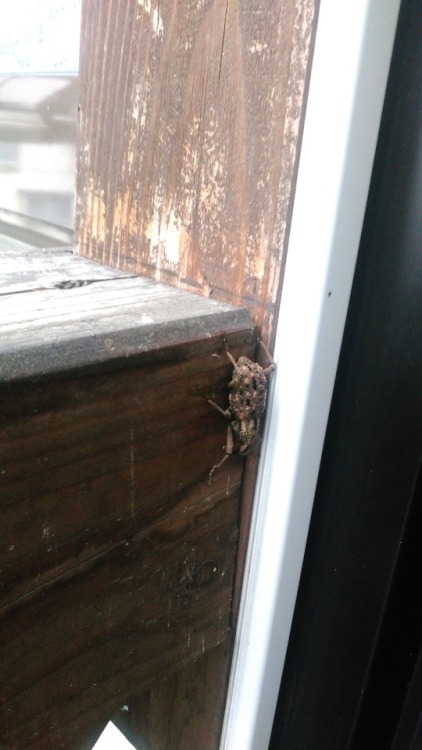#brown beetle
Next to my front door today, what the heck is this guy? - @callmegallifreya
Hey! Thank you for your submission and sorry for the long wait.
At first glance I could see you have a Weevil of some type (ゾウムシ、”Zoumushi”, Elephant Bug), but it took some digging to find precisely which one. Japan has around 1000 species of weevils (!).
I always love when I stumble across something in the most roundabout way, like searching for “Black long horn beetle with yellow spots and white and black antenna that lives in Honshu” and it turns out to be called a “yellow spot Longhorn” or something. It always makes me facepalm because I should honestly remember people name insects with simplicity. Today I should have taken that lesson to heart because you have a
オオゾウムシ Oo-zoumushi, “Big Weevil”( Sipalinus gigas).
English name: Giant Weevil. it is the largest weevil in Japan!
Size: 12-34mm
Description: Like other weevils, its proboscis is long and curved downward, giving it the charming Japanese name of “Elephant Bug”. The entire exoskeleton is textured with bumps. A newly-emerged weevil has a fine brown powdery texture over its entire body like velvet, but this is eventually worn away, with older individuals showing more black ‘background color under the paint’, as it were. Bold black streaks along the mottled brown body distinguish this weevil from others with similar brown coloration.
Distribution: Indonesia, Philippines, China, Taiwan, Korea, Kyushu to Hokkaido.
Behavior: It is known to be drawn to lights at night, and can be found on fallen trees in forests where stag beetles also hang out. These weevils will play dead if harassed, and Japanese Wikipedia also notes they have sharp claws that cling tightly to surfaces such as trees or a human hand, and they are difficult to pull off of a surface. They will continue to cling to a tree so tightly you can pull their legs off before they’ll let go! :o
Weevils place their eggs in weak and dead trees and the larvae burrow inwards to feed on trees such as pines, chestnuts and elms. It is considered a pest in lumberyards because it prefers to lay its eggs in dead wood. (Well, it seems a very logical mistake to make, on the weevil’s part.)
Thanks again for your submission!
Post link

